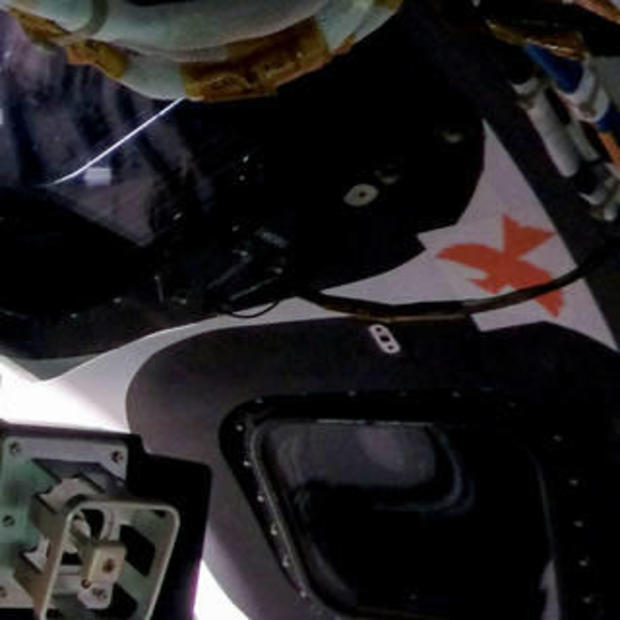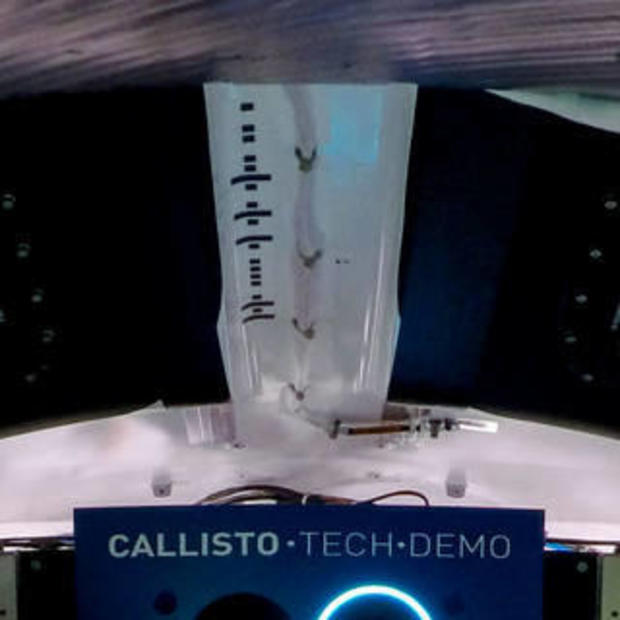15.12.2022
NASA's Orion moonship splashed down in the Pacific Ocean this weekend after a historic voyage through space. And while the 25-day trip around the moon was momentous on its own, some secrets hidden beneath the spacecraft's surface help convey the message of what the mission is all about.
On Saturday, NASA unveiled that Orion had five hidden "Easter eggs" onboard as nods to the agency's moon exploration history. These secret items are part of a NASA tradition, with past flights including their own mementos, such as the Golden Record on Voyager 1 and 2.
Here are the items that went with Orion on its 1.4-million-mile flight around the moon and back.
A hidden animal
To the right of Orion's pilot seat — unoccupied during this crewless test flight — the image of a cardinal sat nestled above the window. The image carried a bit of a double, though entwined, meaning on the trip.

The bird, often seen as a symbolic tribute to loved ones who have died, is also the mascot for the St. Louis Cardinals — a baseball team beloved by former Orion program manager and Johnson Space Center director Mark Geyer.
Geyer died in December 2021, in Houston, at the age of 63, after battling pancreatic cancer, NASA said, adding that he was the spacecraft's first program manager and had helped lead Orion to its first successful test in space in 2014.
Secret Morse code
In the middle of Orion's cabin was a secret word with a deep connection. NASA included the Morse code symbol for "Charlie" in honor of the former Orion deputy program nanager Charlie Lundquist, who died in 2020.
NASA says Lundquist helped oversee the design, development and testing of the Orion spacecraft. Prior to that role, he had been the manager of the Orion crew and service module office.
Tribute to international partnership
Orion's historic mission to the moon was not done alone and required an incredible global partnership. To emphasize just how important that collaboration was, NASA made sure that the countries who helped make the flight possible got a front-row seat to the journey.
Right in front of the pilot's seat, NASA included the country codes for every nation that helped develop and build the spacecraft's European Service Module. Included in the shoutout were Germany, Italy, Switzerland, France, Belgium, Sweden, Denmark, Norway, Spain and the Netherlands.
Flying Frank Sinatra to the moon
One of singer Frank Sinatra's biggest songs was his 1964 hit "Fly Me to the Moon." And its affiliation with NASA is more than a happy coincidence — it's become somewhat of an anthem for past missions.
In a stealthy tribute to the song, NASA placed the musical notes to the refrain —"C, B, A, G, F" — below one of the windows next to the pilot seat.
In 2008, Grammy Award-winning producer Quincy Jones, who produced and performed the tune with Sinatra, gave astronauts John Glenn and Neil Armstrong platinum copies of the song. Glenn was the first American to orbit the Earth and Armstrong was the first person to walk on the moon.
The day Orion landed back on Earth also happened to be 50 years to the day after the final Apollo 17 moon landing.
A historic lunar return
The final touch to the bundle of "Easter eggs" was a tribute to NASA's own history of exploration.
On the top of the pilot's seat, right next to the agency's logo, sits a succession of black-and-white bars representing the binary code for the number 18. The code was placed in honor of the agency's past trips to the moon with the Apollo program — and a tribute to this new phase happening generations after Apollo 17made its journey.
Quelle: CBS NEWS




